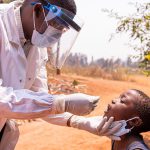There are several steps individuals should take if a family member, coworker or they themselves experience a possible cardiac emergency.
According to recent data from the Centers for Disease Control and Prevention, heart disease is responsible for more than 600,000 deaths in the U.S. each year, making it the leading cause of death for both men and women. Nearly 735,000 Americans will have a heart attack this year, but early intervention dramatically increases a person’s chance for survival.
To recognize a cardiac emergency, look for these signs and symptoms:
Chest pain or discomfort – Pain associated with a heart attack is often located in the center of the chest and lasts for more than a few minutes. It may go away and then come back. It’s sometimes described as an uncomfortable pressure, squeezing, fullness or heaviness.
Pain or discomfort in other areas of the upper body – Pain may be felt in other areas of the body by itself or in connection with the chest discomfort. This pain may be in the arms (one or both), back, neck or jaw.
Shortness of breath or difficulty breathing – Difficulty breathing may be present before the chest pain; however, it often accompanies the discomfort.
Subtle symptoms – A sudden onset of sweating, nausea, vomiting and light-headedness may also occur.
Symptoms may vary between men and women. Chest pain is the most common symptom; however, women are more likely to experience the subtle signs, including difficulty breathing, nausea, vomiting or light-headedness.
If a person encounters any of these symptoms in themselves or others, they should call 9-1-1 immediately, even if they are not sure that this is a cardiac event. This will activate the EMS system, and the emergency dispatcher will send help immediately and may even provide pre-arrival instructions. The EMS team will begin any necessary treatment as soon as it arrives.
Learning CPR and how to use an automated external defibrillator takes only a few hours and can make a huge impact. Visit the Pitt Emergency Medicine Program website for information about monthly CPR classes.
About the Authors
Thomas Platt, Ed.D., N.R.P., is the director of paramedic education and the emergency medicine program at the University of Pittsburgh. With more than 30 years of EMS experience, he has served as a principal investigator for projects led by the Pennsylvania Department of Health and the U.S. Department of Transportation.
Owen Traynor, M.D., is an adjunct assistant professor in Pitt’s emergency medicine program. With more than 40 years of EMS experience, he is the medical director for several EMS agencies in the Pittsburgh region.








